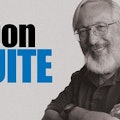People have an impression that Bob Pease hated Spice (see "Free Downloadable Spice Tools Capture And Simulate Analog Circuits"). That isn’t quite true. He was leery about its indiscriminate use, and he liked to warn other engineers, in his cantankerous way, about where the pitfalls were. Over more than 20 years of writing for Electronic Design, Pease referred to Spice many times. It all began with “What’s All This Spicey Stuff, Anyhow? (Part I)” in 1990.
“The main problem is that people tend to trust its answers, as they trust most computers, long after the reason to trust it should have evaporated,” he wrote. “I have come very close to fist fights and screaming contests when a person claims that such-and-such an answer is obviously right because Spice gave it to him. Conversely, I normally try to avoid working with Spice unless I can first run a calibration program on it, so it gives me an answer that makes sense—a sanity check.”
He was cautiously positive about trusting companies’ models of their parts. Writing about op-amp models, he said, “Maybe in a few years, models of slow op amps will be trustworthy. But I don’t think you can get very good results from modeling the fast ones. Why? PC-board layout strays…. The performance of high-speed op amps and precision circuits depends so critically on the layout and on the resistors and capacitors, making the model itself almost irrelevant.”
This was before National Semiconductor, Pease’s employer, offered models of its own op amps.
“If you are a good engineer and use these models as a tool to pioneer some experiments that are inconvenient to test on the breadboard, you may find these models are helpful. But you had better check things out with a breadboard to confirm the circuit,” he wrote.
“For example, you can use Spice to ‘measure’ some voltages or currents that are so small and delicate that you really could not measure them with a scope, a buffered probe, or current probe—not in the real world. But, if you try to rely solely on these models, without breading, they won’t tell you the whole story. Your crutches will collapse, sooner or later, and you can’t say I didn’t warn you.”
In that same vein, “Primarily, Spice is good for a first estimate of a circuit’s feasibility—as an aid to help you compute how the circuit is likely to work, ideally,” he said.
“Spice can help you decide what’s a good circuit to breadboard,” he said, though he added a caution: “Then when you have the breadboard running, you want to confirm that the Spice results really are consistent with the breadboard data, so you can cross-check that your models are good. If you have good models, you can use Spice to exercise the system through a first round of worst-case tests, more quickly than with a breadboard.”
In some columns, he could get very specific about error sources. “One time I [was simulating] a moderate-sized circuit with about 22 bipolar transistors, and it didn’t converge well. Then, all of a sudden, one day it started to converge beautifully and quickly,” he wrote.
“I was so impressed, I backed up to find the ‘scene of the crime.’ I tried to duplicate all of the changes I had made since I last had problems,” he continued.
“It finally turned out that I had an unused resistor and an unused capacitor each tied from one node to ground. Nothing else was connected to that point. They were originally ‘commented out’ by an asterisk. But, at one point, I deleted the asterisk and the useless R and C were dropped into the circuit—they just happened to make the convergence a lot better,” he said.
“When I removed the R and C, things got worse again. This led me to appreciate two things: that the convergence is a lot more fragile than we suspect, and that we may be able to randomly throw useless resistors into a circuit, and sometimes they may help to improve the convergence.”
So it’s not that Bob Pease hated Spice. He respected it the way you respect a loaded gun with a hair trigger.
About the Author

Don Tuite
Don Tuite (retired) writes about Analog and Power issues for Electronic Design’s magazine and website. He has a BSEE and an M.S in Technical Communication, and has worked for companies in aerospace, broadcasting, test equipment, semiconductors, publishing, and media relations, focusing on developing insights that link technology, business, and communications. Don is also a ham radio operator (NR7X), private pilot, and motorcycle rider, and he’s not half bad on the 5-string banjo.
